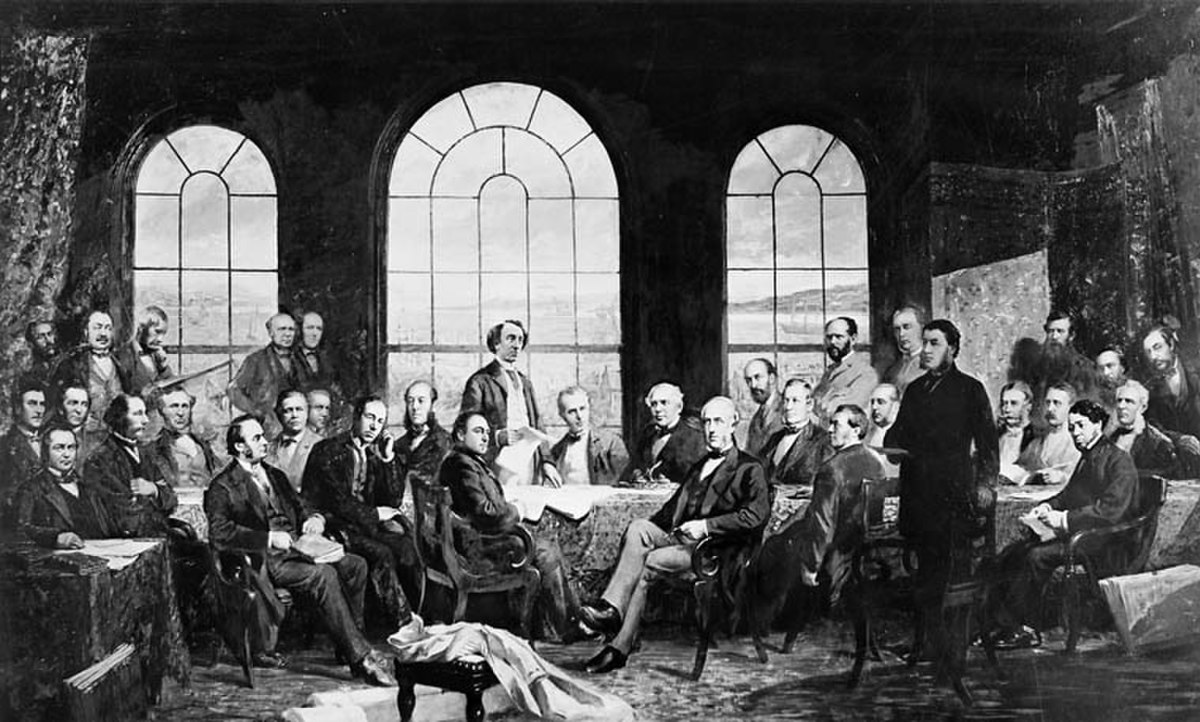
Dominion of Canada
CanadaThree British North American provinces, the Province of Canada, Nova Scotia, and New Brunswick, were united into one federation called the Dominion of Canada, on July 1, 1867. The term dominion was chosen to indicate Canada's status as a self-governing polity of the British Empire, the first time it was used about a country. With the coming into force of the British North America Act, 1867 (enacted by the British Parliament), Canada became a federated country in its own right.
Federation emerged from multiple impulses: the British wanted Canada to defend itself; the Maritimes needed railroad connections, which were promised in 1867; English-Canadian nationalism sought to unite the lands into one country, dominated by the English language and loyalist culture; many French-Canadians saw an opportunity to exert political control within a new largely French-speaking Quebec and exaggerated fears of possible U.S. expansion northward. On a political level, there was a desire for the expansion of responsible government and elimination of the legislative deadlock between Upper and Lower Canada, and their replacement with provincial legislatures in a federation. This was especially pushed by the liberal Reform movement of Upper Canada and the French-Canadian Parti rouge in Lower Canada who favoured a decentralized union in comparison to the Upper Canadian Conservative party and to some degree the French-Canadian Parti bleu, which favoured a centralized union.
